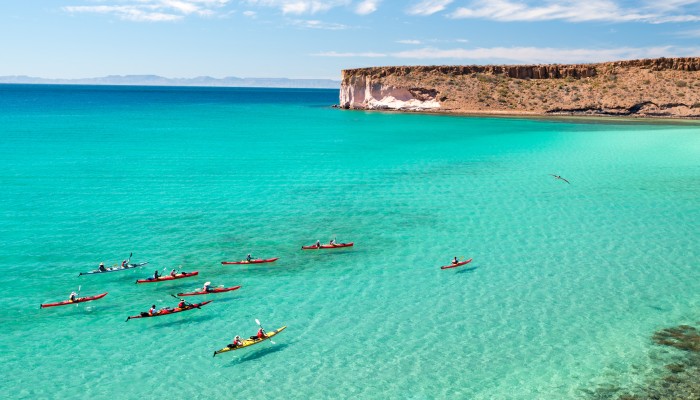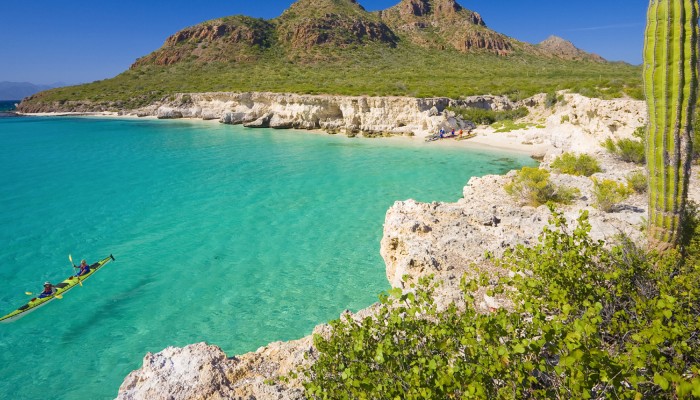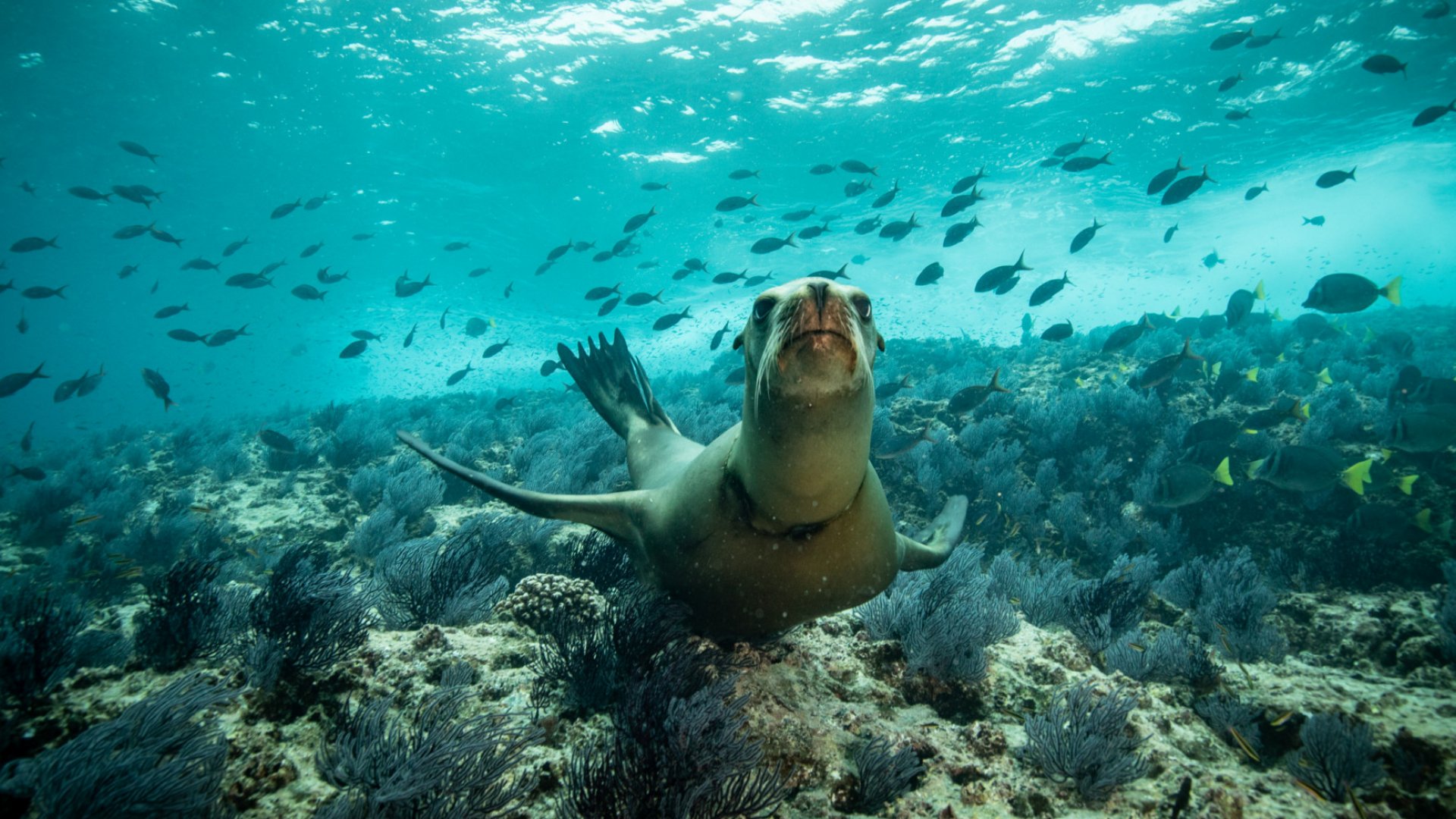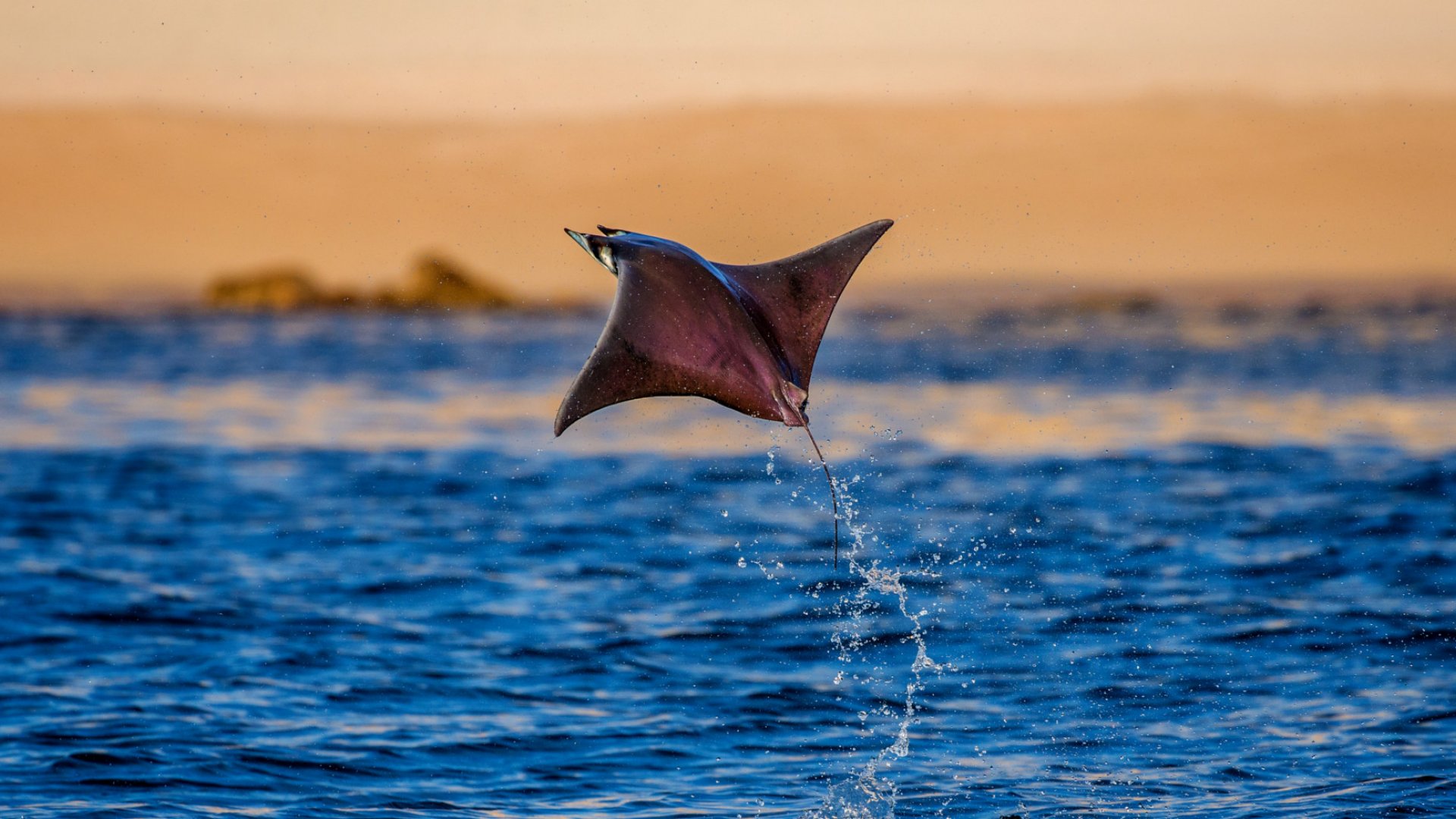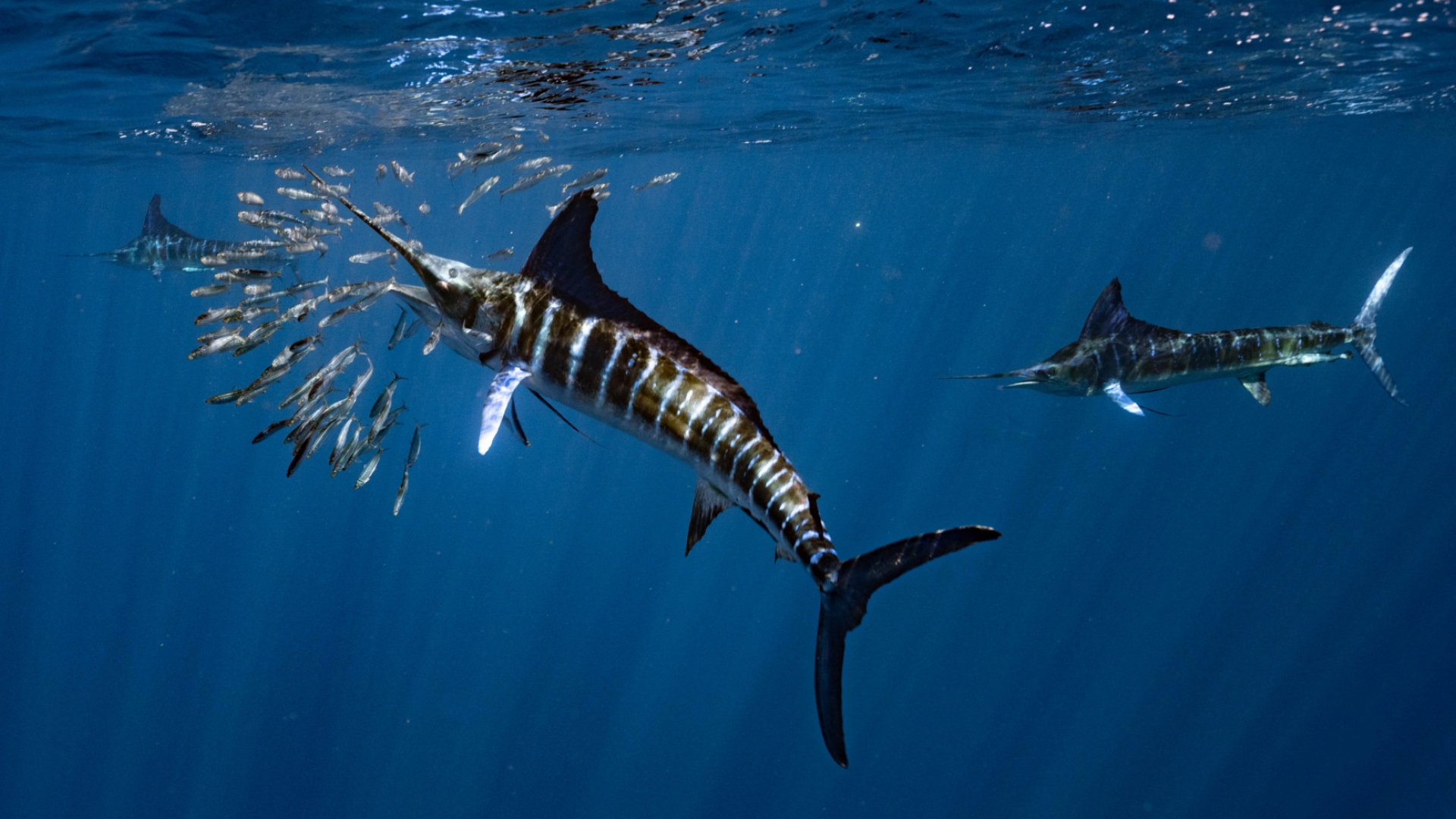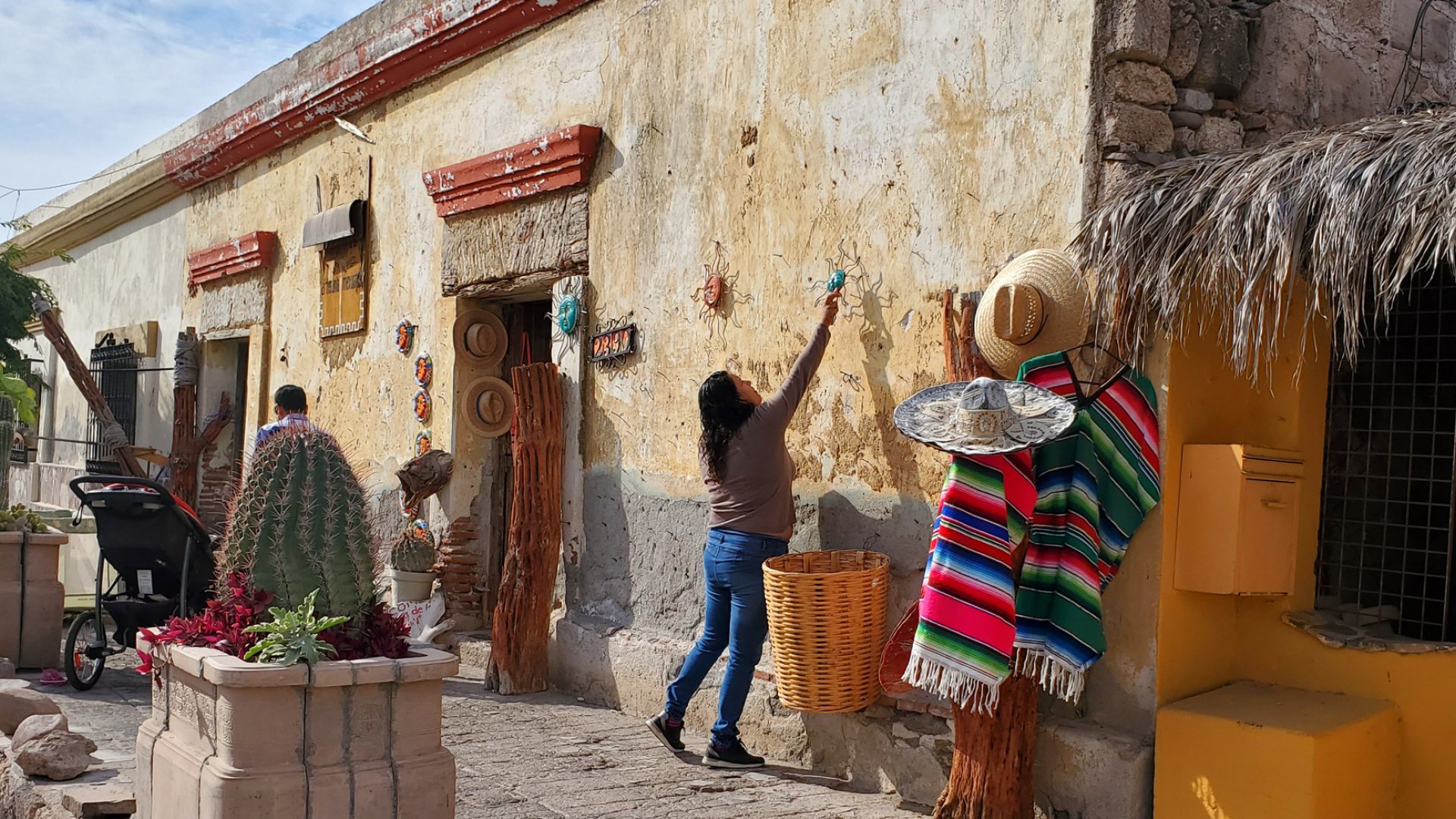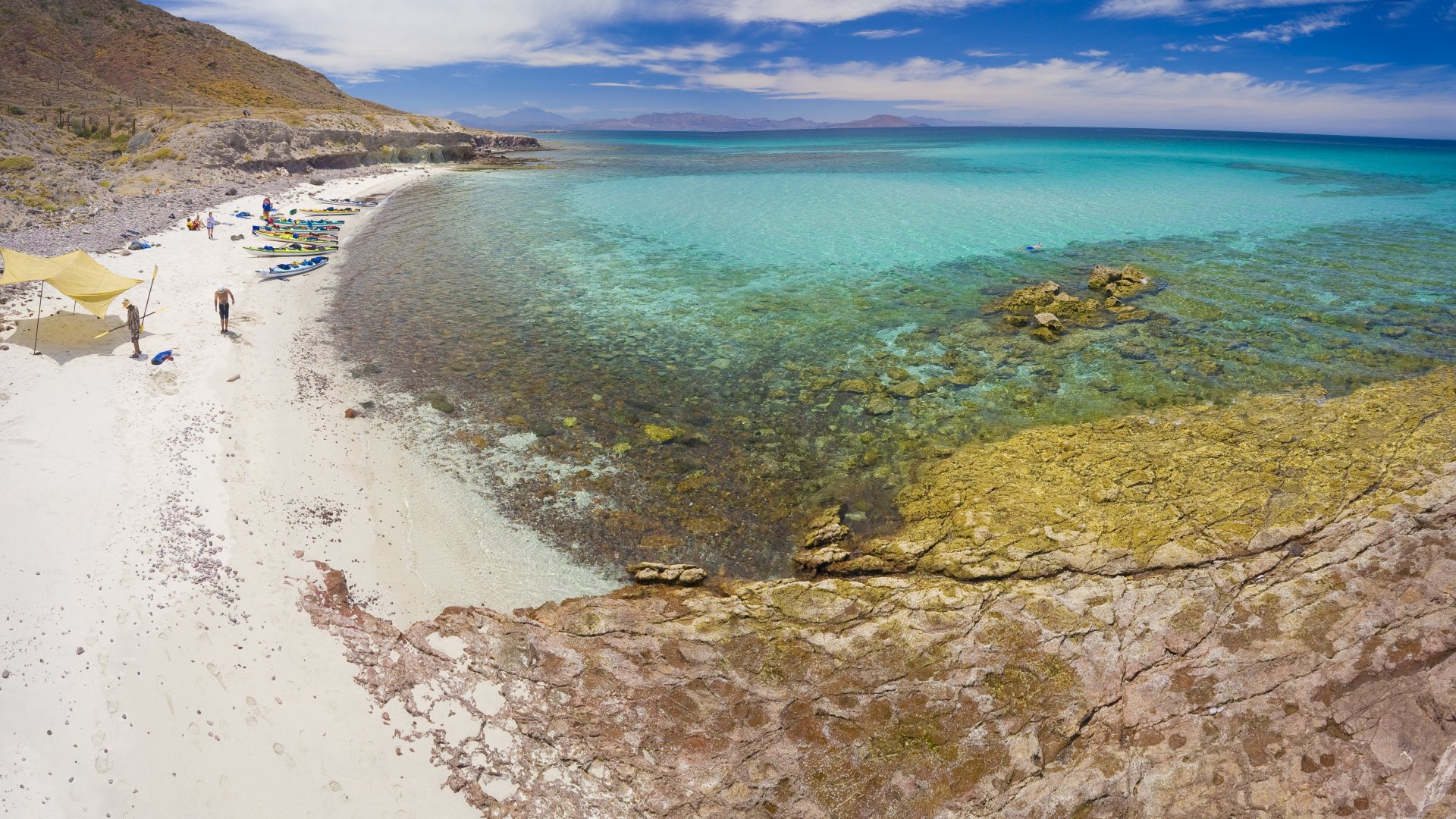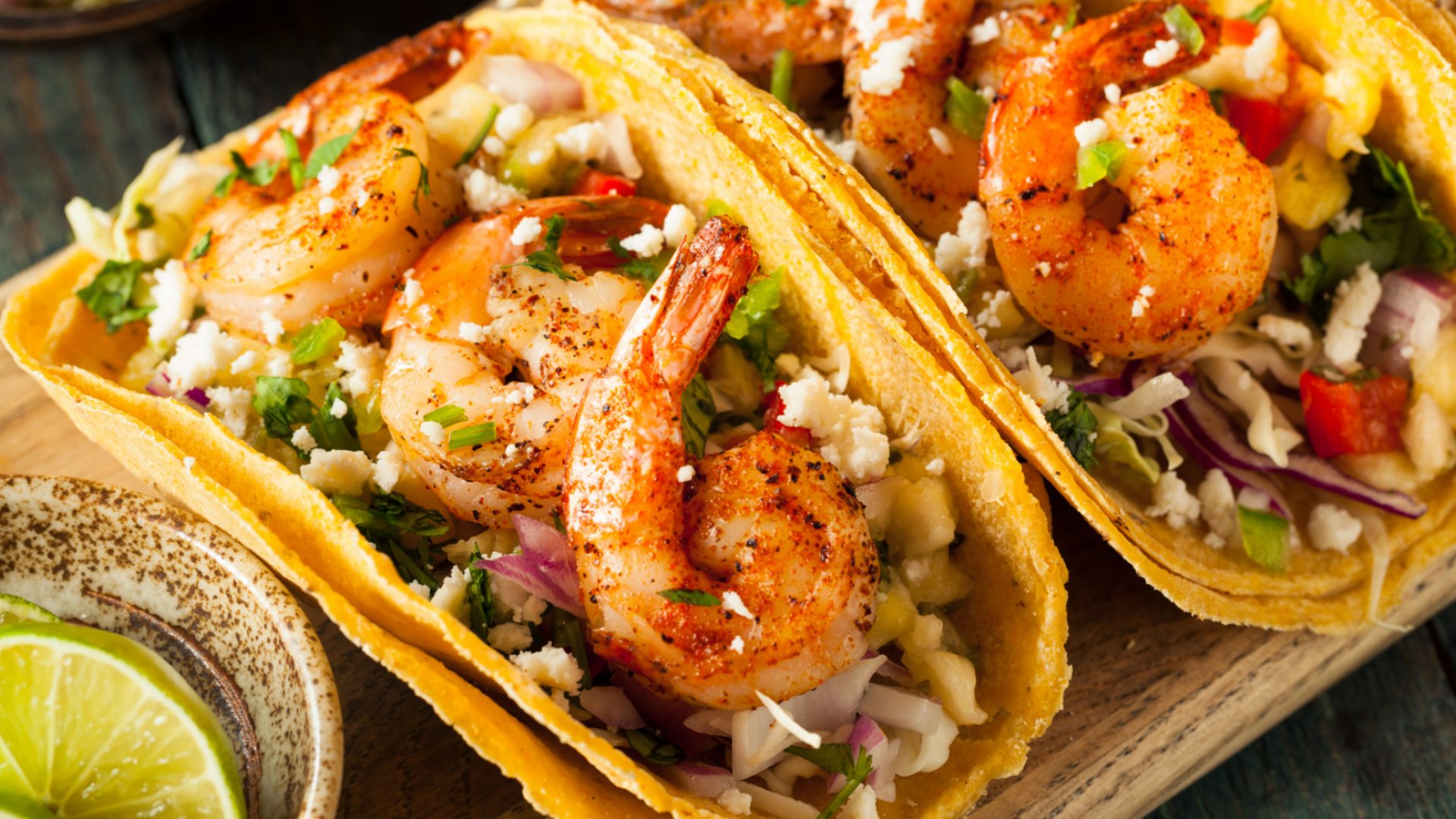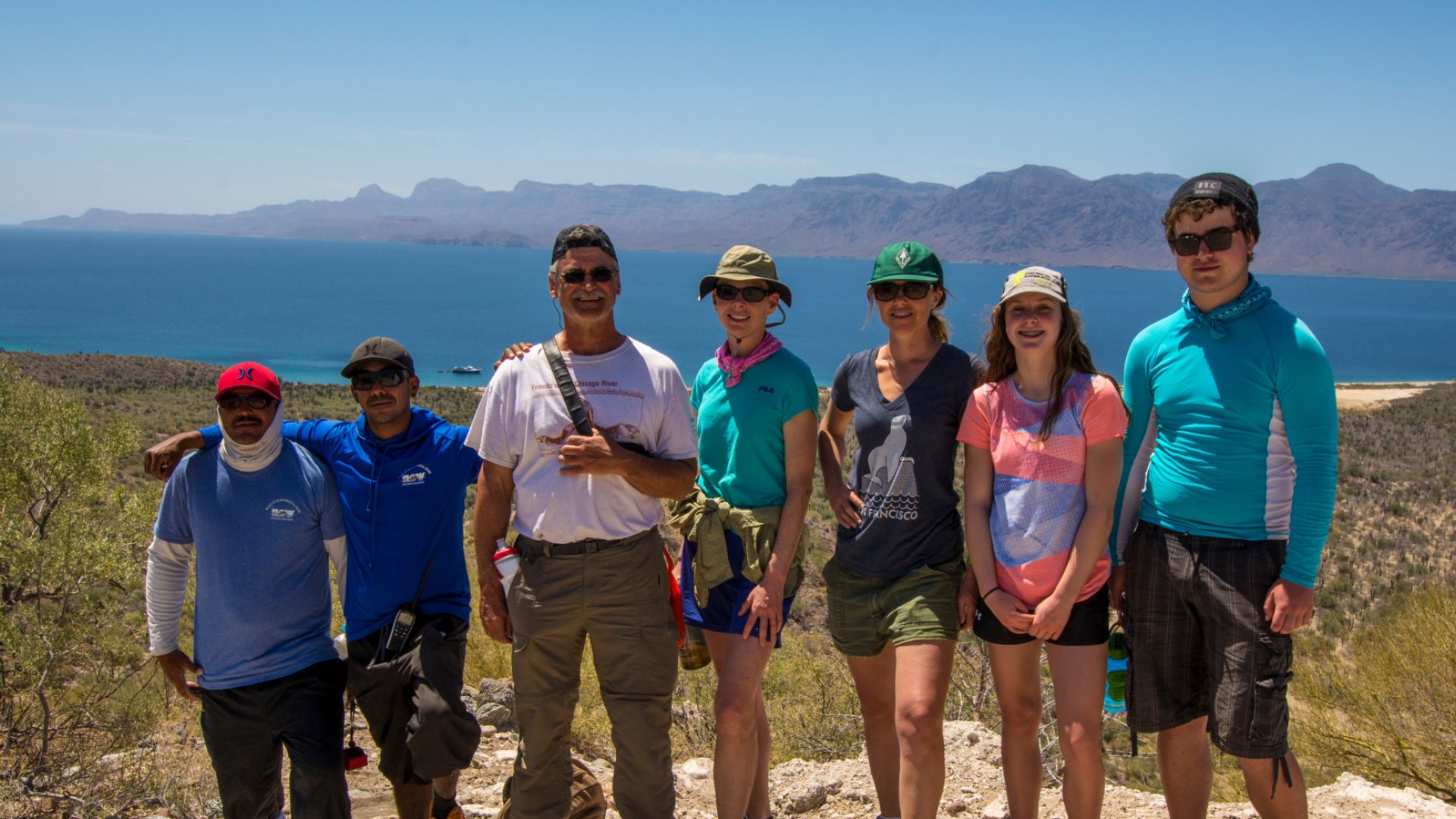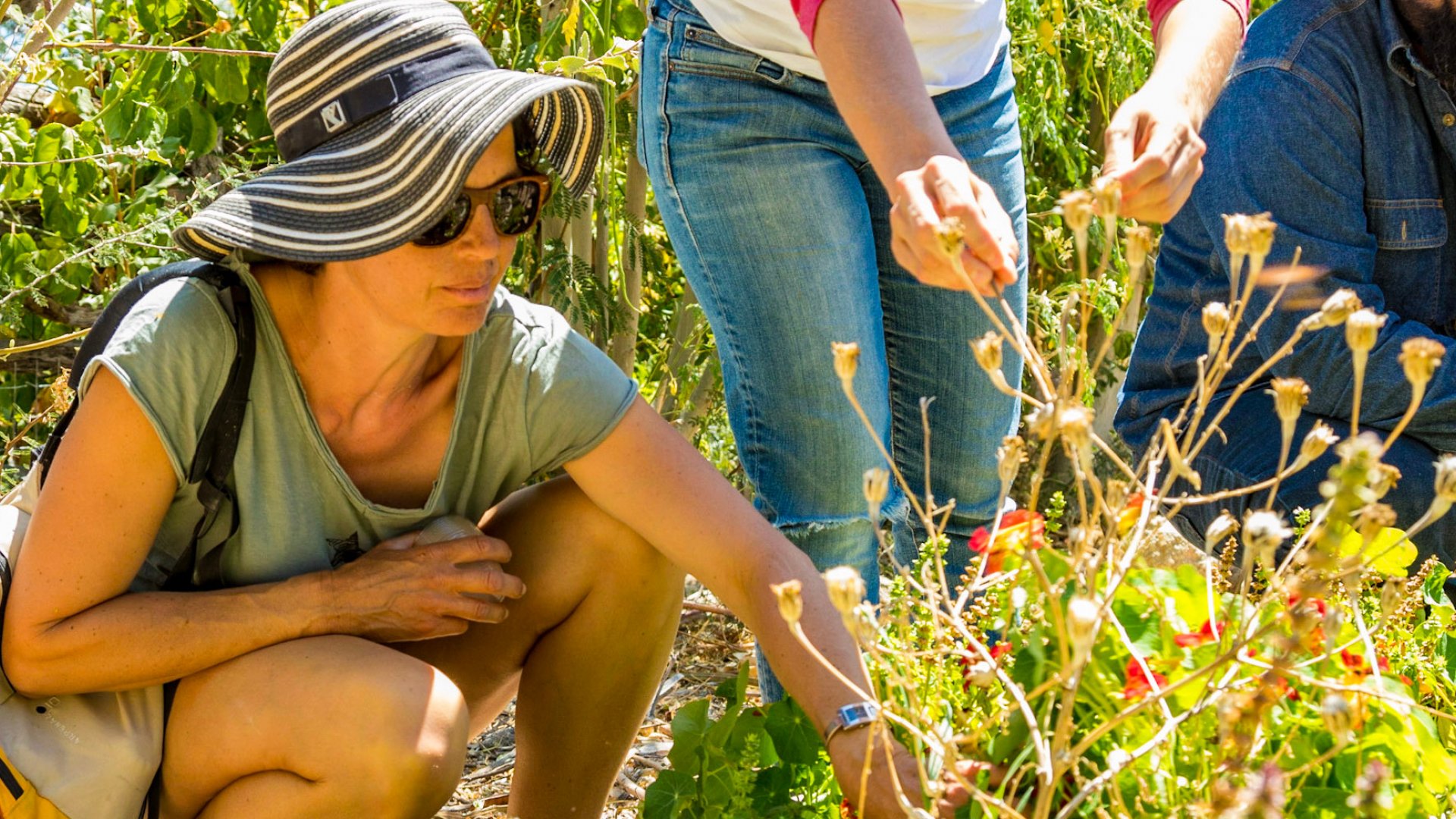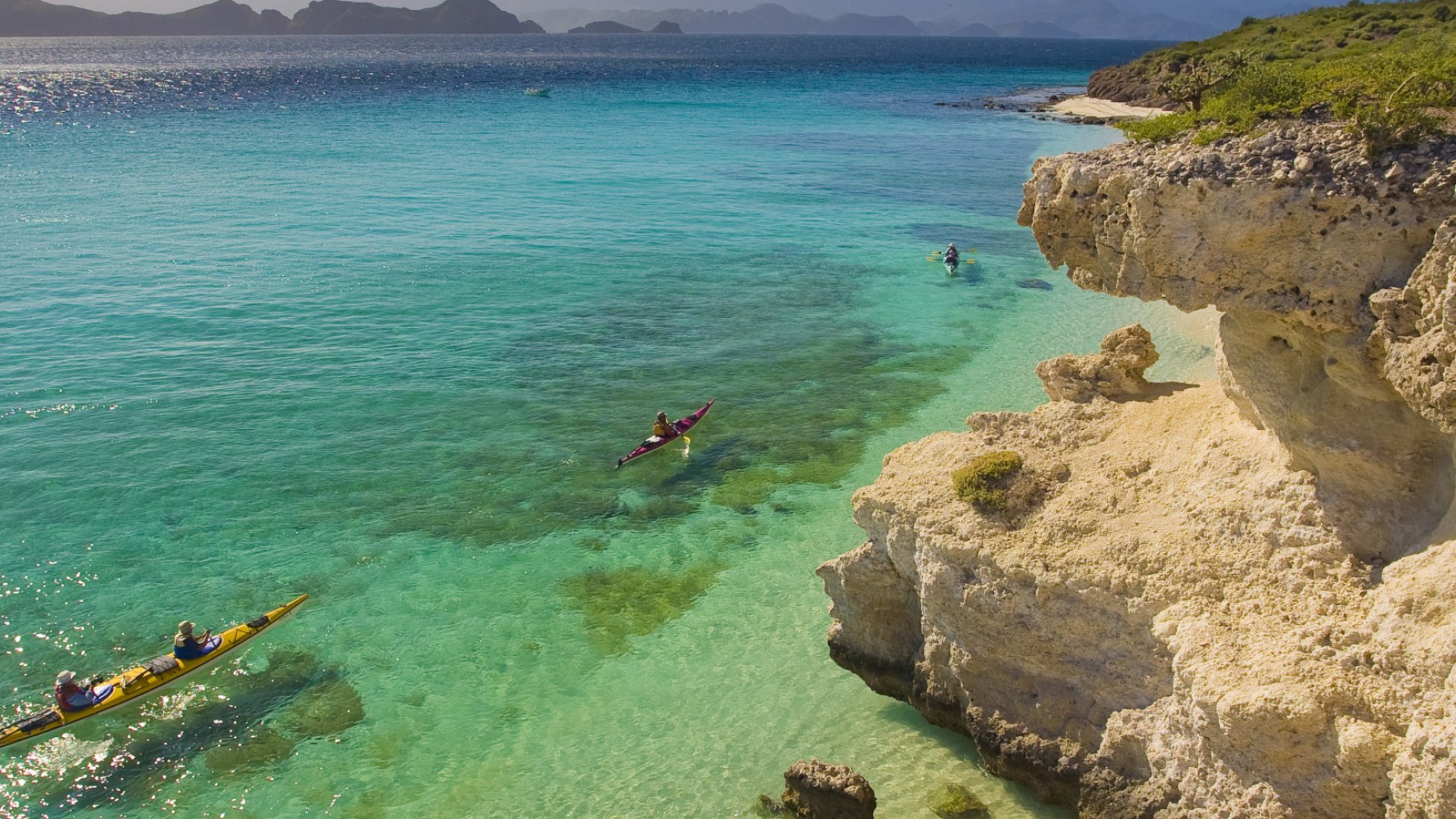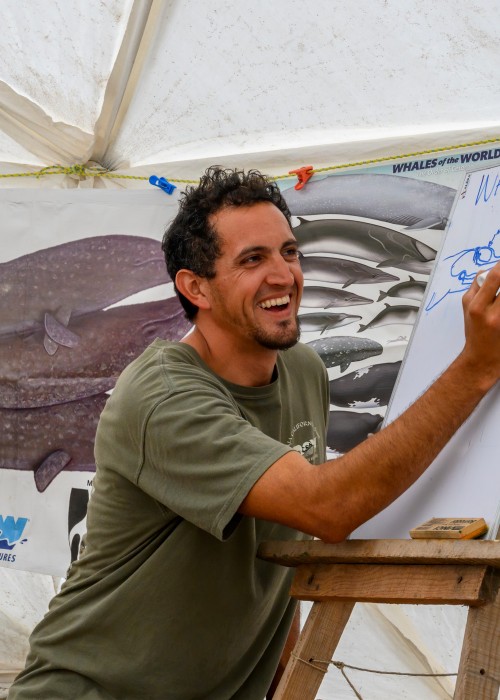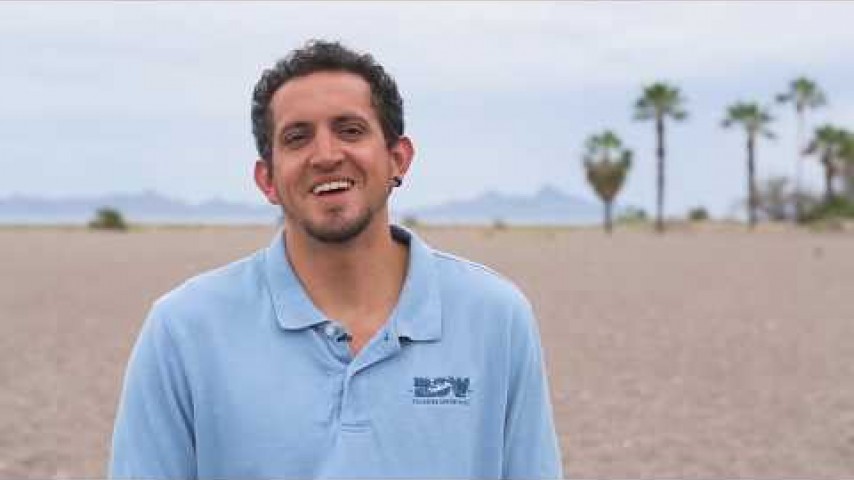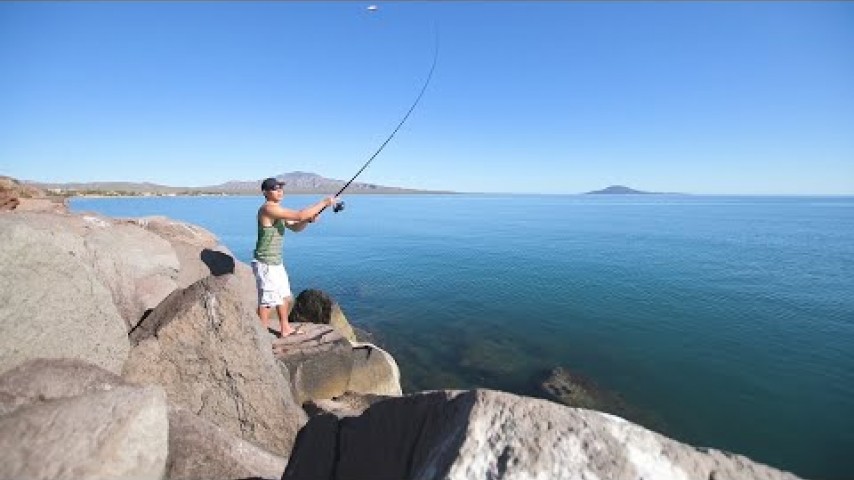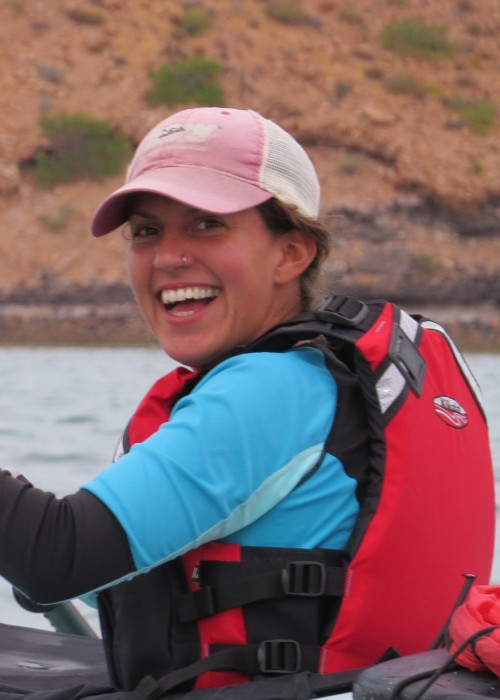Overview
Just across the border, Adventure Unbound awaits in Baja! The gnarled finger of a peninsula and the sun-studded waters of the Gulf of California tend to be a bucket-list item for any avid paddler. Limpid, cerulean blue waters create a mirage-like contrast the the sunset-stained colors of the desert offshore. Rugged cliffs look over calm waters. The flora may occasionally be sparce but the wildlife and marinelife are anything but.
Join us and camp under Baja's stars at our exclusive whale base camps. Glide into secluded coves where gray whales give birth and raise their friendly calves who enjoy showing off for passersby. Snorkel in glistening waters where sea lions slip and slide and vibrant fish dart around you. Hike through rolling hills and echoing canyons. Sip on a cool drink and munch on a fresh fish taco while you get to know some locals lucky enough to call Baja home. Let Adventure Unbound take you on an exploration through Baja's rugged, raw, and breathtakingly real heart.
Our Trips
Custom Tours in Baja
With Adventures Unbound, discover Baja California Sur’s magnificent landscape, culture, and surrounding nature on foot or by paddle led by expert local tour guides who know the country’s landscapes, history, and culture like the back of their hand. Explore the picturesque coastlines of the Sea of Cortez and the Pacific Ocean in a more customized and intimate travel style.
Working closely with local partners and affiliates in Baja, let us curate a private tour that reflects your interests, whether it’s whale watching, relaxing by the water, paddling and snorkeling, or discovering new cultures. All of our customized tours in Baja include delicious local cuisine, and comfortable accommodations.
To get started, please fill out the form below, or you can learn more by reading some of our most frequently asked questions.
Image & Video Gallery
Country Guide
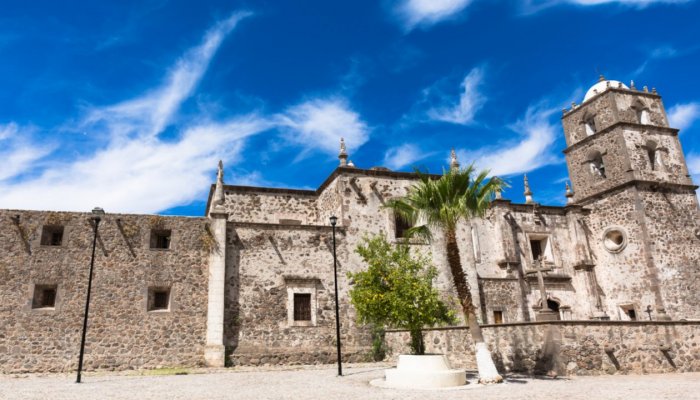
History of Baja
Early History
Baja was already inhabited in 11000 BC by indigenous nomadic tribes. In 1530 the Spaniards who discovered Baja found four major groups. Some were hunters and gatherers while others had developed agricultural systems, but all tribes were very skilled fishermen. Their artifacts were found throughout Baja California, as well as some primitive paintings dating back to 1700 BC. Many visitors are drawn to the caves to see these mysterious paintings.
Middle History
Baja was discovered and identified as a peninsula in the 16th century by Hernán Cortés during a quest for a mythicized island of gold west of Mexico. In the 18th century Spanish missions succeded one another, firstly the Jesuits, then the Franciscans who ceded control of Baja California Sur to the Dominicans in 1773. While no gold was found, Baja was recognized as a transition area for trading ships.
Recent History
Throughout the Mexican War of Independence lasting from 1810 to 1821, Baja was involved but isolated from the hostilities. At the end of the war, it was divided into four municipalities, Loreto being the capital until 1830, then shifting to La Paz which is the capital still today. Baja was also very unaffected by the Mexican-American war in the middle of the 19th century, after which the Treaty of Guadalupe Hidalgo stated that Baja would not be annexed by America.
Baja California Today
Today Baja is no longer an isolated peninsula, tourism is very important to the local economy, with hundreds of thousands visitors heading there daily. Besides tourism, Baja's economy also relies on fishing, agriculture, salt mining and manufacturing. Despite its popularity, Baja has retained its authenticity and mystery, and visitors will feel that they are away from it all in this stunning location with a rich culture.

Animals of Baja
The desert of Baja is one of the best preserved regions of Mexico, with a lot of biodiversity and endemic species being relatively protected due to Baja's remotness. Their main threats come from over-hunting, livestock ranching and salt extraction, but there are conservation efforts to protect the animals and their natural habitats.
Birds
Bird lovers will enjoy the 400 species that populate Baja California, out of which six are endemic: San Lucas Robin, Cape Pygmy Owl, Belding's Yellowthroat, Gray Thrasher, Baird's Junco, and the pretty Xantus's Hummingbird. Other species include the Golden Eagle, the Frigatebird, the Cormoran, and many others.
Reptiles and Amphibians
The reptiles and amphibians have developed unusual survival techniques on Baja through the evolution of the peninsula. Amongst them, you may be able to see the two inches long Baja California Brush Lizard, the Baja California Legless Lizard, which as its name suggests, looks more like a snake as it has no legs, the delicate tie-dyed looking San Lucan Leaf-Toed Gecko, or the Coast Horned Lizard which if threatened can shoot highly pressured streams of blood from its eyes. Or the Baja California Chorus Frog which use their vocalizations to create a chorus, the small Plateau Toad in freshwater habitats, or the Canyon Treefrog which live in canyons and rocky stream courses.
Mammals
Unlike other animals, mammals are rarely seen in Baja, due to many species relocating because of human persecution, such as the black bears, the mountain lions and the bighorn sheep. However, you may see some smaller mammals such as the San Quintin Kangaroo Rat which lives in the coastal regions in the north of Baja California, the Baja California Rock Squirrel living in mountain forests near volcanoes, or the Lesser Long-Nosed Bat.
Marine Life, Fish, Sea Turtles and Whales
The Gulf of California is one of the bodies of water richest in nutrients in the world, attracting more than 900 different species of fish (20% endemic), amongst which the Sailfish, Roosterfish, Yellowfin Tuna, Dorado, and the Great White Shark.
Five types of sea turtles can be found along the coasts: the Leatherback Sea Turtle, the Olive Ridley Sea Turtle, the Loggerhead Sea Turtle, the Green Sea Turtle, and the Hawksbill Sea Turtle.
Marine life in Baja is plentiful, with more than 85% of the Pacific (35% of the world's) marine mammals living in the Sea of Cortez, making it a diver's paradise. You may see Giant Manta Rays, Flying Mobula Rays, Sea Lions, Whales.
Baja is visited by several species of whales, amongst which Gray Whales, Blue Whales, Sperm Whales, Humpback Whales, Fin Whales, Orcas, Minke Whales and the extremely endangered Vaquita, the smallest of all whale porpoises.

Geography of Baja
The topography of Baja is quite diverse, ranging from coastal plains to mountains and plateaus. The Sierra de Baja California mountains stretches from California to the south, dividing the peninsula in the middle, with a highest point at 10,147 feet (3,095m). They play an important role in the climate, with the western side being more temperate, and the eastern side more arid.
The south gulf combines tropical landscapes and deserts, with mangrove channels, huge cacti forests and an abundant birdlife. There are more than 3,000 miles of coastline, with shallow bays to the west, shaped by the waves, which are a heaven for marine life, and steeper cliffs to the east.
The many sea formations created by the waves draw and fascinate visitors year after year. Amongst these are the stunning hidden cove of Lover's Beach, the large underwater canyon nearby which divers will enjoy, the mushroom rock in La Paz, and the natural marine geyser of La Bufadora in Baja California Norte.
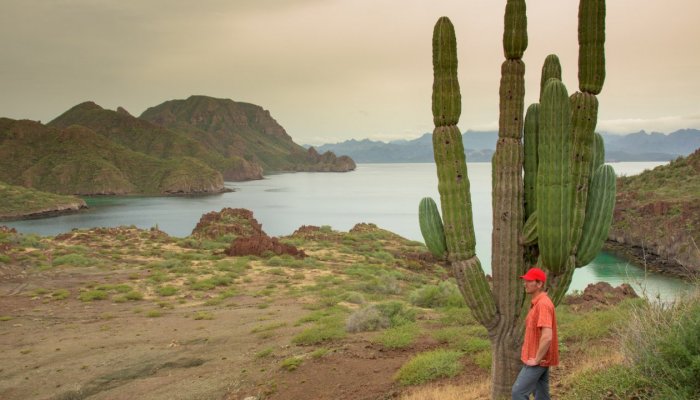
Flora of Baja
Baja California is in the Sonoran desert, with arid and harsh grounds, and strong winds. The flora is adapted to this low humidity environment and counts about 4,000 plant species, included 700 which are endemic. Xeric scrub, divided into subcategories, make up the majority of the botanical life.
Amongst the most iconic plants found in Baja are the slow growing prickly Boojum Tree which looks like an upside-down carrot, the Elephant Trees with their trunks swollen with water for storage and their grayish-white bark, amongst which the sweetly fragranced Bursera microphylla. You will also find the large and tall Ocotillos shrub with their spiny stems that branch like canes from their trunks, the Datilillo or Tree Yucca which can grow to 7 meters and provides for the people of Baja as its fruits and flower buds can be eaten in different ways, and about two dozen species of Agave including the Agave shawii whose leaves form a rosette, in the center of which grows an inflorescence reaching up to 4 meters which blooms with bright yellow or reddish flowers after 20 to 30 years of growth.

Conservation in Baja
Baja's Conservation Challenges and Combative Efforts
Conservation in Baja poses some challenges as its unique ecosystems are susceptible to industrial development, oil drilling, fisheries and tourism.
Conservationists work hard to preserve its unique habitats, animal and plant species found nowhere else on earth, as well as its coastlines which play a vital role for migrating species. Efforts are made to preserve whales, but also individual sea turtle populations and their nesting habitats. Mexico's plan to build over twenty marinas along the coast met strong opposition and failed in 2009.
Unesco Biosphere Reserves
Four of Mexico's 40 biosphere reserves are located on Baja California.
El Vizcaíno reserve, with over 9,624 square miles, is Mexico's largest wildlife refuge, counting 308 terrestrial and marine vertebrates and 469 plant species. It includes the lagunas of Ojo de Liebre and San Ignacio established in the 1970's as marine refuge zones. It was recognized as a UNESCO biosphere reserve in 1993.
The Sierra La Laguna reserve, which can be found 85 miles south of La Paz in Baja California Sur, covers the fragile ecosystem of the granite mountain range and the distinctive endemic plant and animal species of the southern tip of the peninsula which used to be an island. It was designated a global reserve by UNESCO in 1994.
The Alto Golfo de California reserve, in the Sonora State on the Gulf of California's border, is known for its volcanic formations, craters, dunes ans coasts. Having an important role in transborder conservation, it was declared a UNESCO site in 1993.
The Islas del Golfo de California reserve, comprising more than 240 islands in the Gulf of California, is of great importance for migrating bird species and their reproduction. With an arid climate, the islands are home to 115 species of reptiles, and the flora is mostly cacti and succulents.
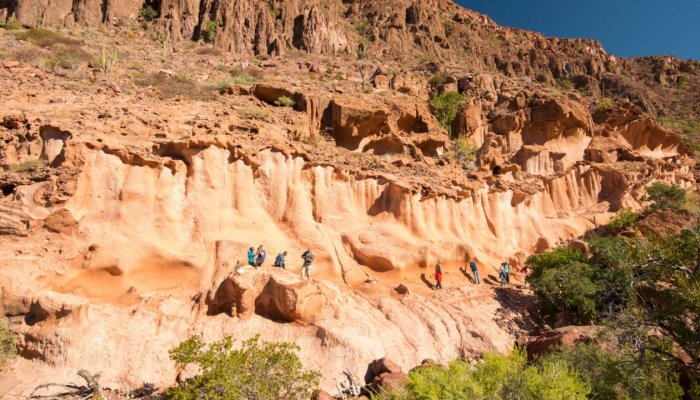
Geology of Baja
The Baja California peninsula is separated from Mexico by the Gulf of California which was formed by the North American and Pacific plates interacting and drifting 6-10 million years ago. It is located over the San Andreas fault, responsible for recurrent earthquakes in the region. It is believed that Baja California will eventually split completely from the continent as it lies on a separate plate, and the gulf existing between the two is growing.
Baja California is made up of five geologic landforms provinces: the flat coastal plains, the block mountains and valleys, the isolated coastal mountains, the granitic blocks and main mountain ranges, and the plateaus and volanic areas. The mountain range stretches from the northwest to the southwest of the peninsula.
The only large volcano complex is that of the Tres Vírgenes comprising El Azufre, El Viejo, and La Vírgen, with a summit of 1940m, in the centre-east part of Baja. They are stratovolcanoes, the most stunning of all, but also the most deadly, although the last recorded eruption dates back to 1746.
Travel Essentials
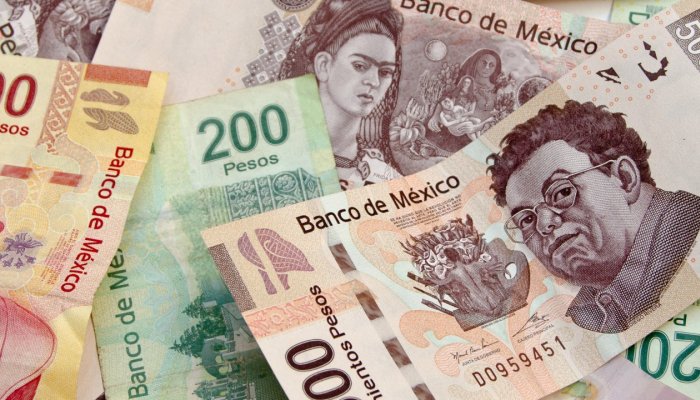
Money in Baja
Currency
The currency in Mexico is the peso, divided into 100 centavos. Paper currency comes in denominations of 20, 50, 100, 200, and 500 pesos. Coins come in denominations of 1, 2, 5, 10 pesos, and 20 and 50 centavos.
Credit Cards & ATMs
Masterard and Visa are widely accepted, American Express less so. We recommend carrying cash as smaller establishments may not accept debit or credit cards.
ATMs are easily found in cities and offer good exchange rates. Larger establishments also accept USD cash, but using pesos is recommended as you may not always get a good exchange rate with USD.
Health & Safety in Baja
Vaccines
No vaccines are required for US citizens visiting Baja.
However the Center for Disease Control and Prevention advises on being inoculated against malaria, rabies, typhoid, hepatitis A and B, and up-to-date with routine vaccinations.
Food and Water
Water in Baja is safe, but it is always best to be careful what you eat and drink while traveling. Food bought from street vendors present the greatest risks, as proper hygiene may not be followed.
Sun Exposure
Baja's temperatures are very high and long exposure to the sun and heat can present risks to the travelers. It is highly recommended to use sunscreen and drink plenty.
Insurance
We advise reading insurance policies carefully, as many do not cover activities considered as dangerous, unless one pays an additional premium.
Baja Entry Requirements
Passports
Visitors require a valid passport to enter Mexico.
Travelers from Canada, the US, Europe, New Zealand and Australia do not require visas for tourist stays in Mexico under 180 days.
Vaccinations
No vaccinations are required to enter Mexico.
Internet & Phone Service in Baja
Phones
Using your personal cell phone in Baja is inexpensive if you activate a plan for Mexico with your carrier. You can also purchase a Mexican pay-as-you-go cell phone if you are likely to make many calls to Mexican numbers. Or you can use a pre-paid SIM card if your phone in unlocked and compatible.
Bear in mind that reception is very limited in remote parts of Baja, though guides carry satellite phones for emergencies.
Internet
Internet is widely available in Baja, and most hotels, restaurants and cafes offer free wi-fi. It will however be difficult to access in remote areas.
Power in Baja
Baja uses the same power sockets and voltage/frequency as America: the standard voltage is 127V with a frequency of 60Hz with power sockets accepting Type A and B plugs.
Getting to Baja California
By Plane
There are many international flights to Baja from Tijuana (TIJ) in the north and Los Cabos International Airport (SJD), La Paz (LAP), Cabo San Lucas International Airport (CSL), and Loreto International Airport (LTO) in the south.
Most US connections go through San Diego (SAN).
By Land
The main border crossing from the US are Tijuana, Tecate and Mexicali, but Los Cabos in the south is over 700 miles away, so if you plan on visiting the south of Baja, travel by land may not be the best option.
By Boat
To travel between Baja California and the mainland visitors can catch ferries from Santa Rosalía, Pichilingue, or La Paz.
Meet Our Guides
Amaranta Uribe
Loreto Operations Manager, Baja Sea Kayaking & Whale Watching Guide
Amaranta was born in Guadalajara and raised in the small city of Colima, close to the Pacific. Growing up in a family with four siblings kept her parents busy and often outdoors. Adventures to the seashore sparked an early love of the ocean and as a young girl, Amaranta developed a passion for the sea and the animals that make it home. This led her to university studies in biology, and then a move to Playa del Carmen to be on the sea. All this was perfect preparation for becoming a guide and in 2016 she was introduced to Adventure Unbound by some friends. She soon was thriving as a guide, enthusiastic about the lifestyle and ability to share her knowledge. Amaranta guides our kayak tours as well as serving as a naturalist guide at our whale camp in Magdalena Bay. During the off season she spends time with her family, creates delicacies in her kitchen, practices yoga, climbing and gets out camping whenever she can.
Diego Vega Romero
Baja and BC Sea Kayaking and Whale Watching Guide
A native of La Paz, Baja Sur, Diego spent a school year in the US while in high school and thus has a great understanding of both English and American culture. In addition to being a talented sea kayaker, Diego loves to play basketball and is on a team in La Paz. Other hobbies include drawing, travel and eating. He attended the University of Guadalajara to study Biology with an emphasis in Entomology and then the University of LaPaz where he went on to earn a Masters Degree in arid land ecology, most fitting for the Baja peninsula. Diego joined the team in 2017 and is passionate about sharing the natural history of Baja, both in the water and on land, with our guests. In addition to guiding sea kayaking tours, Diego works in Cabo Pulmo National Park as a snorkeling guide, a skill he also enjoys sharing on our trips. With a great sense of humor and great depth of knowledge, Diego is a favorite among our guests.
Rafael (Rafa) Escalante
Baja Sea Kayaking & Whale Watching Guide
Born in Guadalajara, Rafael (or “Rafa”) received his bachelor’s degree in biology and has down extensive work on different projects involving marine and terrestrial species. Guests appreciate his quiet, joyful nature and benefit from his knowledge of a wide variety of local flora and fauna. In his spare time he enjoys climbing, surfing, snorkeling, camping and cycling, but fishing might be abiding passion. A keen traveller, Rafa loves to discover new people and places.
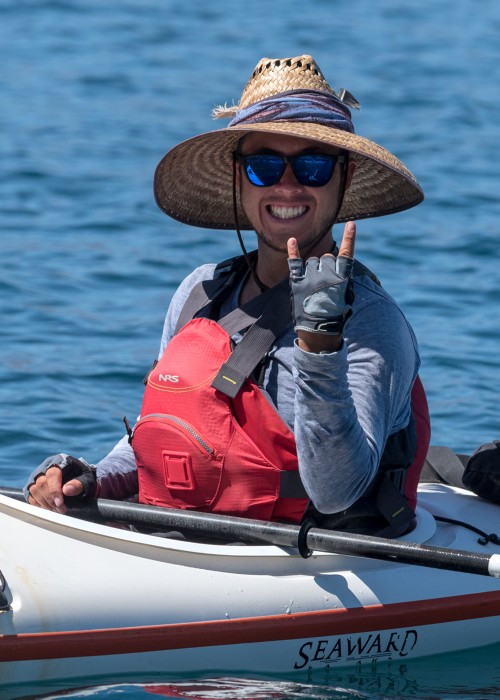
Mario Alberto Escalera Gómez
Baja Sea Kayak Guide & BC Area Manager
Native of Mexico City, when he was 6 years old he saw his first whale and after that, he decided he wanted to be a marine biologist. Now he is a graduate of the University of Baja California Sur. He works in environmental education and sustainable development workshops with a group of young teenagers he cofounded in La Paz. He believes that the proper education is the keystone for our societies to do the first step to sustainable societies and thus responsible use of our resources. Mario is also our BC Area Manager, helping lead and support our team of guides in British Columbia.
Monica Sanchez
Baja and BC Sea Kayaking and Whale Watching Guide
Now in her fourth season with Adventure Unbound in Baja, Monica loves the water, and everything surrounding it. She is especially passionate about whales and dolphins. Monica always dreamt of being a wilderness explorer like the journalists in National Geographer magazine. Due to her love for both the ocean and marine mammals, she decided to work at an aquarium in the Caribbean where she worked as a dolphin and sea lion trainer for a couple of years. While she loved being so close to the animals, she realized she would rather see them in the wild, in their natural habitat. Monica discovered Sea Kayak Adventures was looking to hire a naturalist for their Baja whale watching tours, and applied. The day she was hired was "one of the best days of my life; my dream came true. I will be in the wilderness, observing whales and dolphins in their natural habitat."
Monica loves that every day as a guide is a new adventure, a new experience, and a surprise, where the unexpected is the norm. She loves sharing her excitement and passion for nature with guests, as well as hearing about their stories. She loves knowing that the time she shared with them in nature gave them something special that they will remember for the rest of their life. When she's not guiding, Monica likes to hike, explore, and travel. She also loves reading about marine life and nature, and discovering new places where she can practice stand-up paddle boarding. In the off-season, Monica works as a reporter.

Ramon Murillo
Baja Panguero
Ramon can trace his roots to generations of fishermen in the Loreto area, and his knowledge of the Sea of Cortez and its weather is boundless. We are truly honored to have him provide motorboat support on some of our Sea of Cortez tours in Baja (called pangas in Baja California). He is a master panga captain, with many amazing stories of the high seas to relate.

Alex Magana Ruiz
Baja Sea Kayaking & Whale Watching Guide
Alex, a native of Guadalajara, Mexico, now lives in Loreto where he has been a whale watching and sea kayak guide and logistics coordinator for Adventure Unbound. He personifies guest service and adds panache to our tours. He also runs his own business selling day tours in Loreto and is a wonderful artist and photographer. Go visit Alex at the Loreto marina snack shop for his vast knowledge of day tours in the area.

Ruben Sandoval Zuñiga
Baja Kayak Guide & Assistant Panguero
Ruben has been guiding since 2013. Ruben most commonly guides on our La Paz, Espiritu Santo kayaking tours. Ruben is from San Luis Potosi, and has been fond of the Sea since he was a child. He moved to La Paz 15 years ago to study and get his Bachelor Degree in Marine Biology. When he was a student he started doing underwater fishing and free diving. Ruben decided to get involved in tourism because he wanted to show the visitors the beauty of La Paz and the importance of conserving the environmental resources. Ruben's favorite part of guiding is showing visitors the magic, the beauty and the greatness of Espiritu Santo, and he loves making our guests feel part of the AU family in Baja.
When Ruben is not guiding for Adventure Unbound you can find him under the Sea! He loves to search for new places to explore and Marine life to observe. Ruben loves sharing this passion with our guests, snorkeling alongside them, pointing out the abundant marine life that exists in the Sea of Cortez. Ruben not only shares his intimate knowledge of marine life with our guests, he is known for serving up delicious Mexican dishes such as Veracruz style fish, ceviche, or huevos rancheros.
FAQ's
What immunizations are recommended or required?
It’s recommended that you are vaccinated against hepatitis A, hepatitis B, typhoid, cholera, and rabies before traveling to Mexico. The Center for Disease Control and Prevention (CDC) also advises that you are up-to-date on your routine vaccinations, including measles, mumps, rubella, diptheria, tetanus, and polio.
Can I drink the water in Baja California?
The tap water in Baja California is generally cleaner than in other parts of Mexico but few locals drink it and tourists are advised against doing so also. Purified and bottled water is readily available at supermarkets and local convenience stores and most restaurants will serve water and ice that has been purified.
What type of Currency is used? Exchange Rate? Are US dollars accepted?
The currency in Mexico is the Mexican peso (MXN), with $1 USD equaling around $20 pesos at the time of writing. Banknotes are issued in 500, 200, 100, 50, and 20 denominations while coins come in 10, 5, 2, and 1 pesos, as well as in 50 and 20 centavos (100 centavos = 1 peso).
US dollars are readily accepted in Baja California and many hotels and restaurants will list their prices in dollars. That being said, you’ll usually end up paying less if you opt to pay in pesos because of how the exchange rates are calculated. If you do need to pay with US dollars, ensure you bring bills that are clean and crisp or they may not be accepted. While Baja is expensive compared to mainland Mexico, it’s still relatively cheap compared to the United States.
There are plenty of casa de cambios in Baja California’s major towns and tourist destinations where you can exchange foreign currency or you can easily withdraw Mexican pesos at ATMs throughout the region. Most have menus in both Spanish and English and some will even allow you to withdraw US dollars. Banks are usually open from 9 or 9:30 am to anywhere between 3 and 7 pm Monday through Friday. Some banks will also open on Saturday mornings.
Visa and MasterCard are both widely accepted at larger hotels and restaurants, as well as at most retail stores and supermarkets. At smaller establishments, you will probably need to pay in cash. If you do pay by card, it’s important to be aware of the fees charged by your card issuer, which will probably be applied even if the purchase price is listed in dollars. Traveler’s checks aren’t readily accepted in Baja California.
What time zone is Baja California in?
Baja California is divided across two different time zones, with the state of Baja California Norte on Pacific Standard Time (PST) and Baja California Sur on Mountain Standard Time (MST). Daylight savings time is observed from around the start of April until the end of October.
What is the official language of Baja California?
Spanish is the official language throughout Mexico, including on the Baja California Peninsula. Indigenous languages are spoken by the Paipai, Tipai, and Cucapah people of northern Baja and you may hear minority languages such as Chinese, Tagalog, and Arabic due to the various waves of migrants to the region. Baja also has a sizable population of expats from the United States and Canada and English is widely spoken throughout the tourism industry and in both Los Cabos and Tijuana.
Do I need a visa or passport to travel to Baja California?
All visitors to Mexico need a valid passport to enter the country, with two free pages for entry and exit stamps. Citizens of the United States, Canada, Australia, New Zealand, and Europe don’t need a visa for stays of less than 180 days.
Do I need Travel Insurance?
Travel insurance is not mandatory when visiting Baja California but it’s highly advisable that you purchase a policy. Not only will you be protected against any financial loss from theft or flight cancellations but you will also be covered for any medical expenses, such as hospital fees or repatriation due to unexpected injuries. Before purchasing any travel insurance policy, carefully check what is and isn’t covered so you can make an informed choice.
What is the best way to get around once I'm there?
There are domestic flights between Los Cabos or La Paz and Tijuana if you want to quickly get between north and south Baja, as well as long-distance buses. The most comfortable are the deluxe (ejecutiva) services, which are air-conditioned, have bathrooms, and sometimes even provide complimentary refreshments.
Most travelers wanting to explore the peninsula opt to rent a car, which will give you greater flexibility and allow you to explore the region’s spectacular landscapes. International car rental agencies and reliable local operators are represented at Baja California’s airports and in its major tourist towns. It’s important to be aware that it’s mandatory to have personal liability insurance when driving in Mexico, which will cover any damage incurred during an accident to other people or their property. This is usually not included in initial quotes given by car rental agencies, so it’s something to keep in mind.
The Transpeninsular Highway connects most of the major destinations in Baja California and is easy to navigate. However, roads in and out of towns are not as well-maintained as you might be accustomed to. Dirt roads are common and unexpected trenches and speed bumps can often take you by surprise. It’s best to avoid driving at night as many of the roads are poorly lit and with unmarked hazards. Military checkpoints dot the region and car inspections here are commonplace.
If you prefer not to drive, taxis are generally an easy and economical way to get around Baja’s towns and resort areas. Fixed rates are usually set between destinations, with drivers having a written table of prices on hand so there are no surprises.
When are the best times to visit Baja California?
The best time to visit Baja California is between mid-January and mid-March at the height of the whale migration season. Whale sharks are best spotted in the Bahia de la Paz from October to March. If you’re coming to kayak, then October/November or March/April are best as the wind drops and the water conditions in the Sea of Cortez are clear and calm. Windsurfers and kite surfers will find the most favorable conditions between mid-October and early April. In summer, the temperatures can soar well into the 90s, which makes it an ideal time to visit if you want to spend time lazing at the beach or surfing.
What kind of adapters will I need for my electronics?
Mexico uses plugs with two flat parallel pins (type A) or with an additional grounding pin (type B) and a standard voltage of 127V. Travelers coming from the United States and Canada won’t need a power converter or adapter to charge their devices but citizens of Australia, New Zealand, Britain, and Europe will. It’s worth being aware that power outages are a common occurrence in parts of Mexico, so always power up your devices when you have the chance or bring a power bank with you.
How much should I tip in Baja California?
In Mexico, the majority of employees in the service industry rely on tips to make a living. It’s customary to leave between 10% and 15% of the bill at restaurants and bellboys are usually tipped the equivalent of $1 USD per bag. Unless your taxi driver has provided additional services, it’s not customary to tip, although allowing them to keep the change is common.
Are there cultural sensitivities I should be aware of?
More than 80% of Mexico’s population identifies as Catholic, although the country does not have an official religion. People are generally very tolerant towards those with other beliefs and are quite laidback, with a “live and let live” attitude. Time is a much more relaxed concept in Mexico and arriving late is not considered rude.
Most people greet with a handshake or will embrace and kiss one another on the right cheek if they know the other person well. Greetings are more elongated than in the West and it’s common to inquire about somebody’s health and that of their family members. Mexicans tend to be generous with their hospitality and open-hearted in welcoming foreigners.
What is the food like? Any special dishes or local delicacies I should try?
With its extensive coastline and Mediterranean-like climate, Baja California is renowned for its seafood, roasted meats, and fresh vegetables. It’s rapidly making a name for its high-end Mexico-meets-Mediterranean cuisine, which has been dubbed “Baja Med” or “Cali Baja” by some.
You can’t come to Baja California without eating fish tacos, which comprise either grilled or fried fish with lettuce, pico de gallo, and sour cream or mayonnaise. Abalone is commercially fished off the coast and is often prepared ceviche-style with lime juice. In Loreto, the specialty is almejas (chocolate clams), which are either cooked simply with butter and garlic or more lavishly with ham, cheese, and white wine.
The peninsula is also renowned as the home of caesar salad and it’s said that the Italian-American restaurateur Caesar Cardini invented the ever-popular dish in 1924 at his Tijuana establishment. Tijuana is also the center of comida China, which was influenced by the arrival of Chinese workers in the late 19th century who came to build the region’s irrigation systems. The most popular dish is camaron enchilado - pan-fried shrimp in a garlic paste.
When it comes to meat, look out for gallo pinto, a minced beef dish that originates from Nicaragua, as well as machaca, a spicy stew that incorporates beef jerky and is usually served with flour tortillas.
If you’ve got a sweet tooth, don’t miss the opportunity to try chimangos, fried donut-like fritters that are best served warm with cinnamon and honey. Sweet empanadas filled with local jams are also widely available.
What are the water temperatures like in the Sea of Cortez?
Water temperatures in the Sea of Cortez range from around 80° F to 85° F in the summer down to between 65°F and 70°F in the winter months. Most people are comfortable in either a shorty or full-length 3mm wetsuit, which are provided by most tour and activity





